Advertisement
Review
Boston Ballet's 'Our Journey' jolts assumptions about classical dance
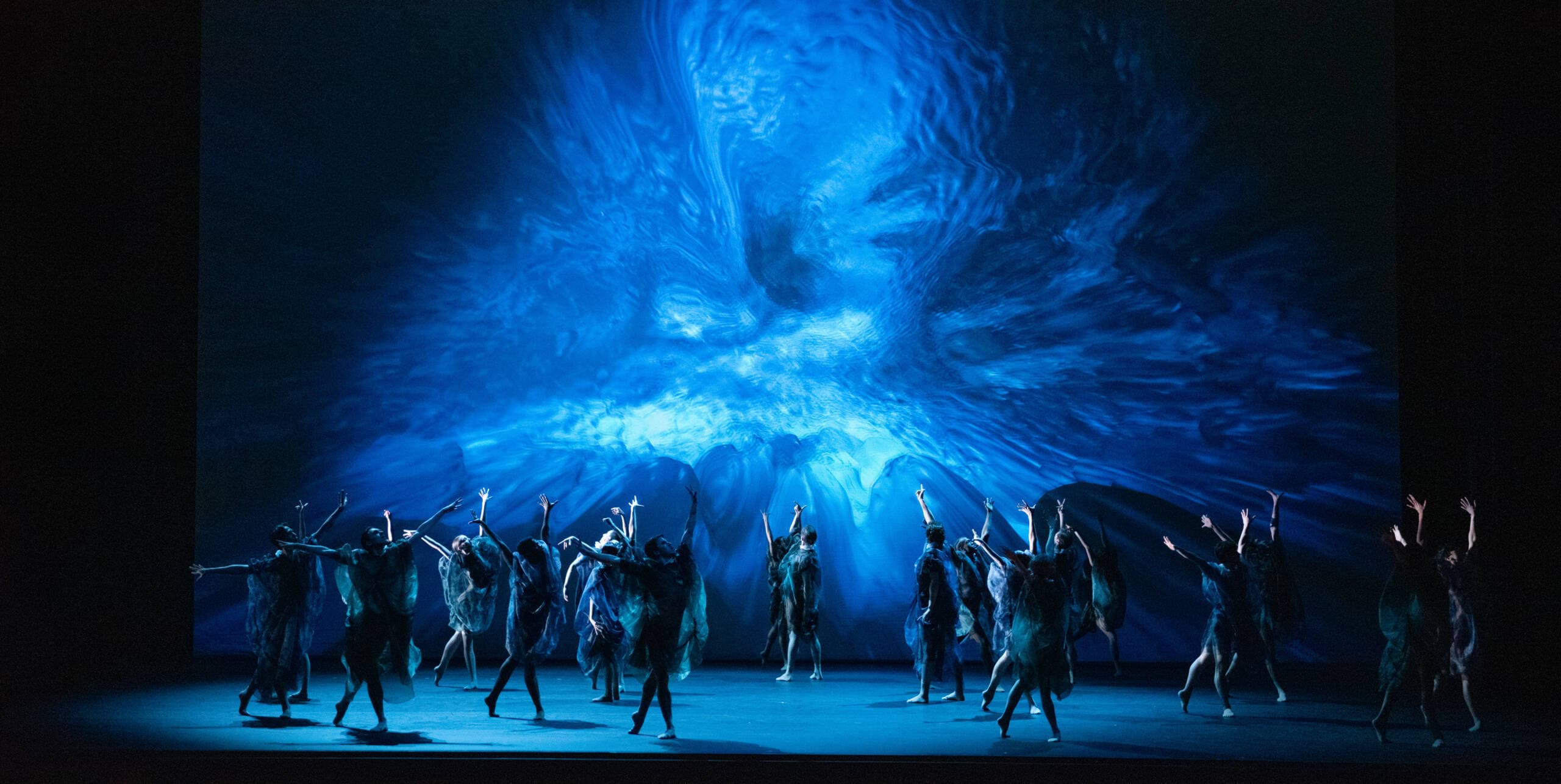
The Boston Ballet opened a new rousing, thought-provoking program on Thursday, April 6, “Our Journey,” a title that suggests the intention of jolting the viewers from their assumptions about classical dance. Two pieces, Justin Peck’s “Everywhere We Go” (a Boston premiere) and Nanine Linning’s “La Mer” (a world premiere commissioned by the company), offered a look at works by a pair of contemporary, big-deal ballet makers, along with plenty of ideas to ponder on the way home.
Peck is working on multiple stages these days: as acting Resident Choreographer of New York City Ballet, with Steven Spielberg, no less, on the award-winning dances for the 2022 re-make of “West Side Story,” and on Broadway where he won a Tony Award for the 2018 revival of “Carousel.” More than 50 of his dances are in the repertories of troupes from Australia to Europe to the U.S., including the Boston Ballet—and he is only 35 years old.
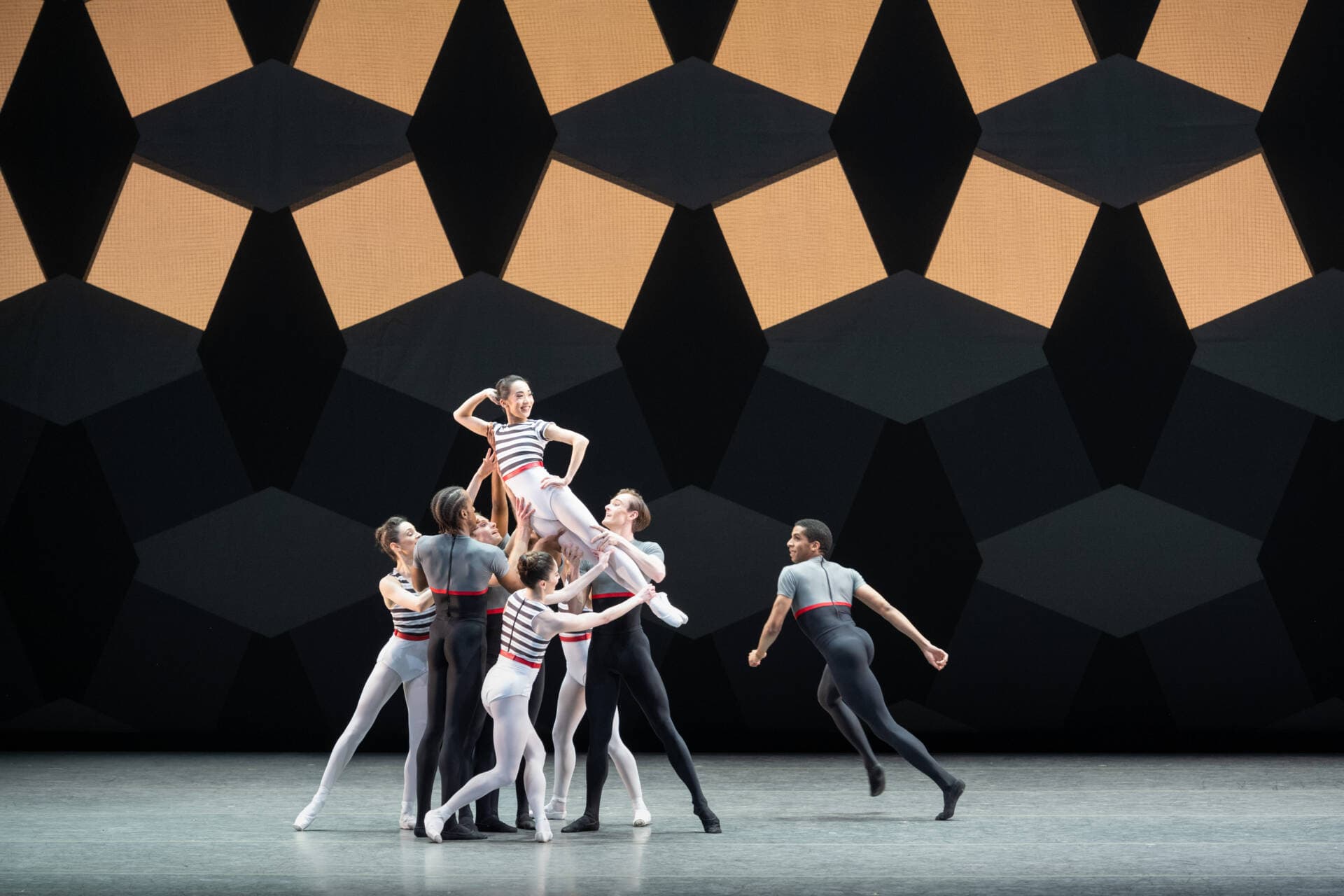
With a score by Sufjan Stevens, “Everywhere We Go” kicked off Peck’s considerable reputation, premiering at New York City Ballet in 2014 when he was still performing as a soloist with the company. Learning from the legacies of Jerome Robbins and Agnes de Mille, not to mention George Balanchine whose ballets he performed for many years, Peck easily handles large numbers of dancers onstage and listens well to the music to make movement that swallows up the rhythms of the score and animates the performers, seemingly from inside themselves to out.
Peck’s ballet is a 42-minute-long ensemble piece for 25 dancers, led on opening night by three couples: Lia Cirio and Lawrence Rines Munro, Chyrstyn Fentroy and Paul Craig, and Chisako Oga and Derek Dunn, with a muse, Haley Schwan of the brilliant smile, hovering beside them. The work unfolds in nine “chapters,” with titles such as “The Shadows Will Fall Behind” and “Happiness is a Perfume,” mostly delivered with breathtaking speed to devour the stage space. On occasion, Peck even uses the offstage areas, poking an arm or a leg out from unseen dancers in the wings. A favorite scene is by a group of performers lying flat on their backs, one leg pointed in the air, followed by a snap-up to seated position and the turning of their faces to the audience. Another is when the pulsing beat of the music is translated by the dancers’ bodies, led by the charismatic Dunn.
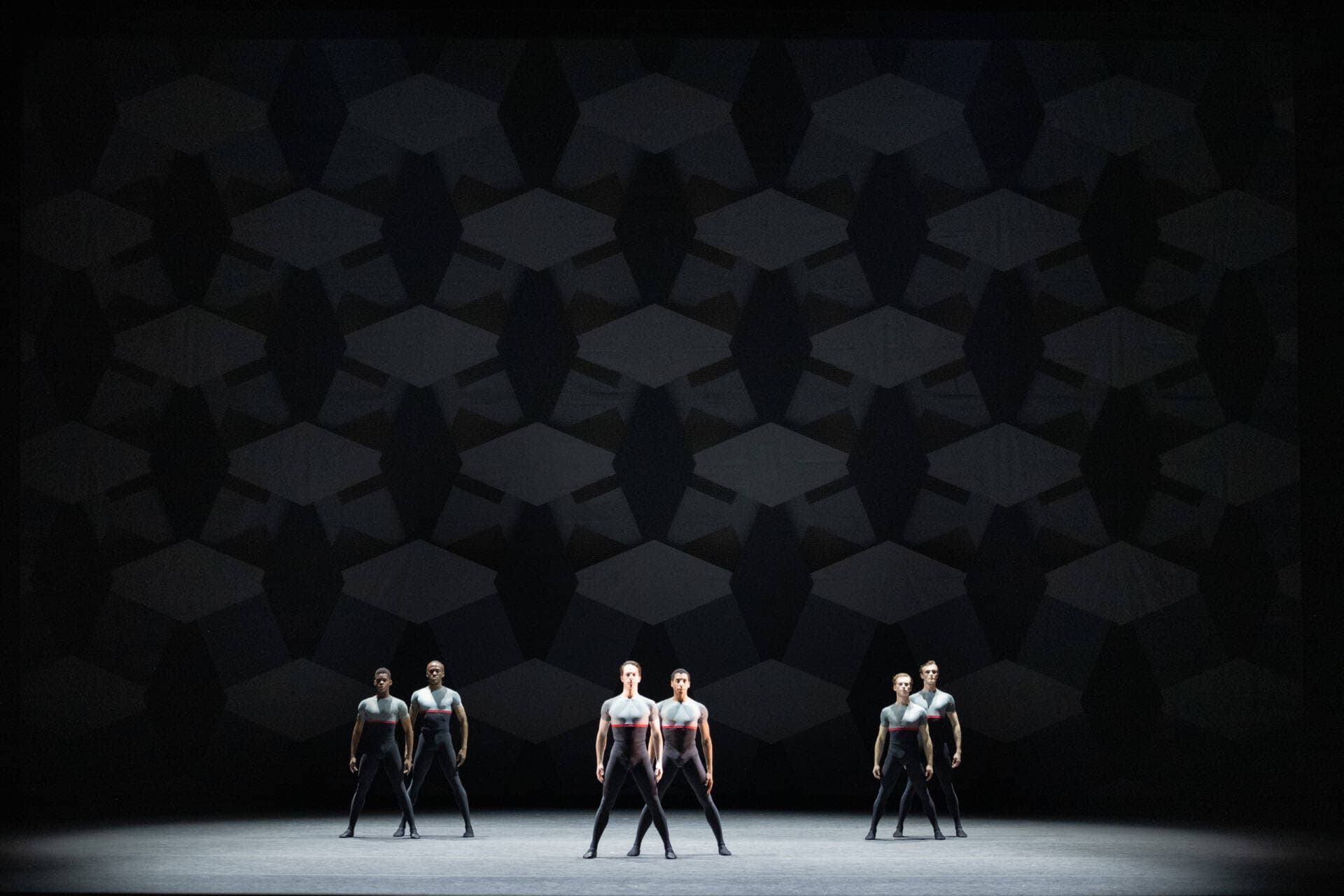
The ballet begins with six men in darkness, moving their arms in signal-like gestures, then marching across the rear of the stage and ending with Craig and Rines Munro in the same place. The fascinating geometric projections on the backdrop were designed by Karl Jensen, the lighting by Brandon Stirling Baker, with simple, unisex costumes of tights and striped jerseys by Janie Taylor.
“La Mer”(music by Claude Debussy), is a different kind of work altogether. Linning, who is a prize-winning Dutch artist widely known in Europe, is a relative newcomer to the United States. She made her American debut with the Boston Ballet in 2021 with “La Voix Humaine.”
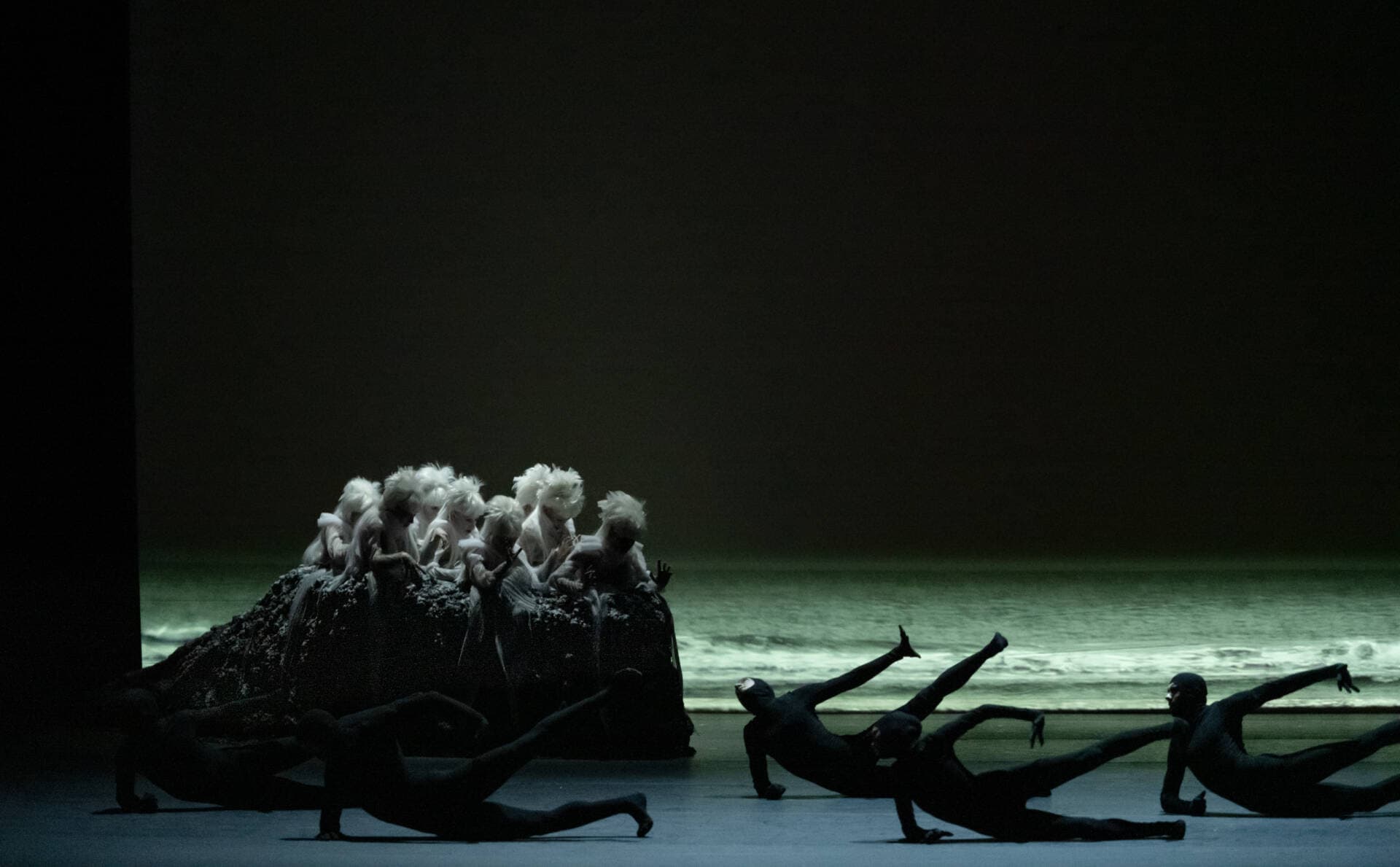
The 50-minute-long “La Mer,” her second piece for the company, is more like an opera, enlisting 33 dancers, eight singers (the Lorelei Ensemble), the Boston Ballet orchestra, a sound score by Yannis Kyriakides, complex lighting design by Baker, a gorgeous photographic backdrop in the color of the undulating movement of the ocean (by Heleen Blanken. The theme is as mighty as the destruction of the ocean, due to human indifference, greed and the misuse of its treasures. "The Boston Ballet credits the Woods Hole Oceanographic Institution for advice on the project.)
The dancers portray various characters in an allegory: Sirens, Beach Fish, Death and Venuses. The costumes, designed by Yuima Nakazato, ricochet between nudity (flesh-colored leotards) for the humans; swaths of filmy, white muslin for the Sirens, and for the ensemble, total coverings of black, including hoodies, with only white faces showing. It’s hard to tell which group are the villains, because of the general anguish and stretched out, deformed movements by all the performers, led by Jeffrey Cirio, in a segment called “Oil Spill Song of the Sirens.” To be sure, the general mood is despair.
Advertisement
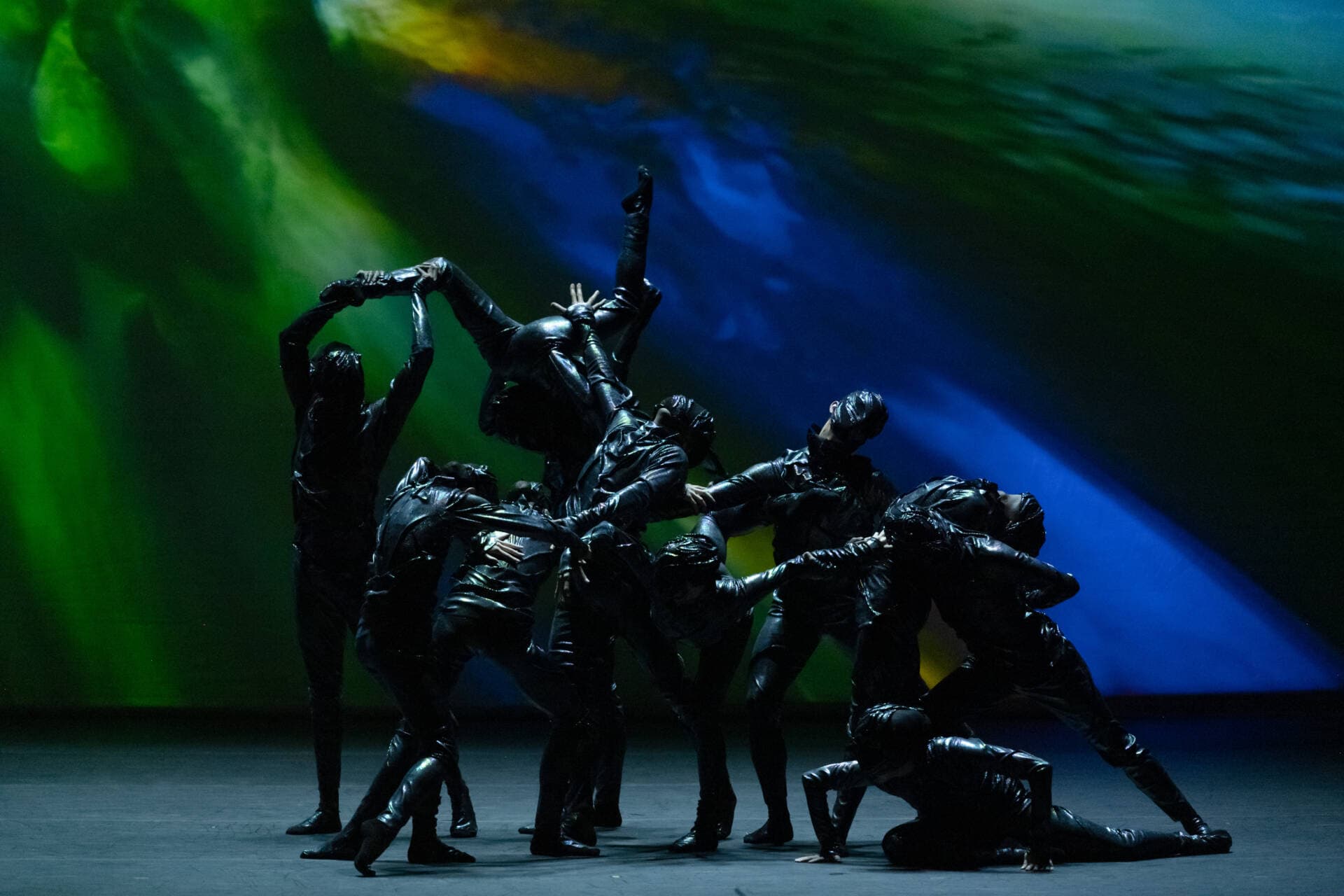
The dancers are to be commended for their embrace of both the perky ballet and snappy dance in Peck’s piece, and the contemporary contortions in “La Mer.” The two pieces required quite a bit of stamina from the company, as well as from the members of the Boston Ballet orchestra which integrated the wide mélange of music and the singers of the Lorelei Ensemble, directed by Beth Willer. Mischa Santora, company music director, conducted both ballets. Next up, the company will show off its dexterity in performances of the beloved 19th-century classic “The Sleeping Beauty,” May 25-June 4.
Boston Ballet's "Our Journey" is onstage through April 16.
